- Michael Horn
- https://tidal.northwestern.edu/people/mikehorn/
- Associate Professor
- Broadening Participation in Computer Science Through Music, Dance, and Coding Across Learning Spaces
- https://tunepad.live
- Northwestern University
- Amartya Banerjee
- Research Associate
- Broadening Participation in Computer Science Through Music, Dance, and Coding Across Learning Spaces
- https://tunepad.live
- Northwestern University
- Melanie West
- Curriculum Director
- Broadening Participation in Computer Science Through Music, Dance, and Coding Across Learning Spaces
- https://tunepad.live
Public Discussion
Continue the discussion of this presentation on the Multiplex. Go to Multiplex



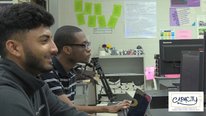
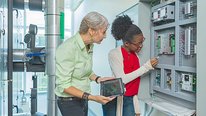
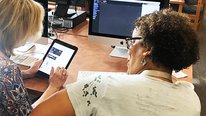
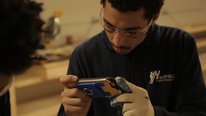
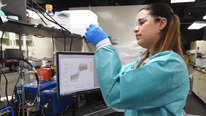
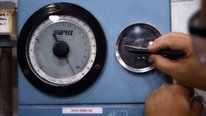
Michael Horn
Associate Professor
Hi everyone, welcome to our video page! We're looking forward to discussing the future of Computer Science learning.
Marion Tate
Hello Michael,
This is an awesome project, as it presents coding in a more concrete versus abstract manner. It (coding) becomes relatable to students through music which they love. The project facilitates students’ ownership of their own learning because the abstract concept of coding is connected to an art they encounter daily through their own efforts. Now, some students will effortlessly make connections between the two disciplines.
Amartya Banerjee
Amartya Banerjee
Research Associate
Thanks Marion for stopping by, and taking the time to encourage us.
Alan Peterfreund
Executive Director
This looks to be a great way to engage students. I see you have a link to a guidebook. How easy has it been for teachers to learn how to use the platform? Has that differed based on the background of the teachers?
Perrin Teal Sullivan
Amartya Banerjee
Michael Horn
Associate Professor
Thanks Alan! This is something we're working on. It can be intimidating for teachers without a strong background in either music or coding, but we're slowly building up a community of educators who can teach and learn from one another.
Perrin Teal Sullivan
Patrick Honner
Teacher
I think there's a lot of promise in connecting music and computer programming in this way. I've played around with similar platforms (like Georgia Tech's EarSketch) and see their potential for students. In particular, I like TunePad's apparent integration of a virtual keyboard to make the connection to instruments more direct.
Are students programming in a proprietary language in TunePad, or is built on top of a standard language?
And do you see TunePad as a tool for classroom use? If so, what courses / units could you envision teachers and students using TunePad, and how?
Steven Taylor
Michael Horn
Associate Professor
Thanks for mentioning Georgia Tech's EarSketch! They are also part of this grant, and we're building TunePad as part of the growing EarSketch ecosystem (https://earsketch.gatech.edu) with the intention that they'll work together.
TunePad uses the Python programming language and we're hoping that it will be used in media computing, computer science, and music classrooms.
Perrin Teal Sullivan
Sasha Palmquist
Steven Taylor
Patrick Honner
Teacher
That's great that you are building TunePad within the EarSketch system. I'm looking forward to playing around with it!
Steven Taylor
Michael Horn
Gayithri Jayathirtha
Hi Mike, this project reminds me so much of our work with electronic textiles where we get students to learn CS concepts by making physical, fabric-based computational artifacts. From my experience so far, learning programming within this context (language and the environment broadly) substantially shapes the set of concepts that students and teachers get to explore more deeply or even touch upon.
I like your interface design that seems to draw learners' attention to some very specific computing aspects in relation to making music. I was wondering if you have explored the range of computational concepts that learners engage with within TunePad.
Michael Horn
Amartya Banerjee
Research Associate
Hi Gayithri, thanks for the note. We have explored ways to record + measure "computational concepts" across projects made/composed by learners; however, given the focus of the platform on both music and programming, bare metrics on programming/computational concepts (measuring usage of variables, loops, functions etc.) were found to be too reductive (unsurprisingly).
In short, we are still figuring this out :).
Gayithri Jayathirtha
Totally understandable! Thanks for explaining!
Really excited about this work! As Nathan has said below, I love how your team has conceptualized this work as an effort towards realizing a "diverse computational future!" All very best! Will look forward to reading more about this project :)
Amartya Banerjee
Michael Horn
Associate Professor
Gayithri! Great to see you online. The thing that's been so rewarding about this project is how many musical concepts map on to computational concepts, and how easily. Loops, variables, arrays, functions, conditionals, randomness, mappings, and that's all without really even trying.
Gayithri Jayathirtha
Ah! Sure, Mike. We were totally excited to see these intersections when we programmed Arduino boards to make music. But, in TunePad you have such a wide variety of instruments and visualizations to support learners (even without a sound musical background). I can only imagine how one can make complex music and code--choose any!
Amartya Banerjee
Michael Horn
Nathan Auck
STEM Coordinator
What a great idea! It’s powerful to see an idea come to life that provides some connection across content areas that the average person might not see connection between. Finishing the video with the reference to our “diverse computational future” was a master stroke, eliciting both visions of the technology your platforms espouses with the human condition!
I’d love to learn more about the impetus for this idea. Was Tunepad created based on the platform or is the a platform a product of a vision that your founders had to begin with? I noticed reference to summer camps and would love to hear more about how you arrived at where you are today!
Sasha Palmquist
Amartya Banerjee
Amartya Banerjee
Research Associate
Thanks Nathan for the encouragement :). I'll ask Mike (co-presenter) to chime in to get the origin story right, but I'll comment about the summer camps for now. Our lab (TIDAL Lab) has been working for years on developing tools for informal learning environments (museum exhibits, libraries, after school programs etc.) and building community partnerships to broaden participation across diverse communities. For example, we have partnered with a local NAACP to run week long learning/coding activities in the summer, done weekly STEAM pop-up sessions in select Chicago Public Schools locations etc. The summer camp you see in the video was organized in partnership with the City of Evanston/Evanston Parks.
The thing is, we probably wouldn't be able to draw a straight line from the start to where we are right now, but I think you got to the crux that our aim is to try and do our bit to get to a "diverse computational future".
Thanks again :)
Perrin Teal Sullivan
Nathan Auck
Albert Byers, Ph.D.
Thank you all for sharing the project. I'm impressed with the power of your platform, and the audiences you desire to reach and serve.
I know that Dr. Dave Shepherd at VCU is also working with an effort I believe he calls Code Beats, and I see similarities. I've shared your video URL with him as well as the folks at Code VA and Code RVA in Richmond, VA. I appreciate you all sharing what you are doing!
Amartya Banerjee
Amartya Banerjee
Research Associate
Thank you for for sharing the links to CodeVA and CodeRVA with us too, it does seem like there are a lot of similarities especially in terms of the motivation too. Thanks again for making the connection and taking the time to drop us a line.
Steven Taylor
I have seen first hand how music integrated with coding is opening up new perspectives for students in the way they see themselves pursuing careers in computer science. Many of the programs and projects at CEISMC at Georgia Tech use similar software with middle and high school students. I love to see the "Aha moments" where they suddenly figure out they have been tricked into using code and realize they like it. I see TunePad making the same impact on students that may have never considered themselves to be computer scientists or musicians. As a musician myself, It is very inspirational to hear the young man in your video saying that he has never used a drum in his life and he loves it. Keep up the good work!
Perrin Teal Sullivan
Michael Horn
Amartya Banerjee
Amartya Banerjee
Research Associate
Thanks for the encouragement Steven :). Unlike you, I consider myself to be musically challenged, and even with that being the case, that young man struck a *chord*.
Ximena Dominguez
Michael, it was so exciting to see this video! I remember you talking about this a few years back when we kicked off our preschool CT project. I think tunepad is such a brilliant idea; I really appreciate that it allows children to understand how CT can be applied to real life situations and highlights coding as way to engage in very creative endeavors. I am interested to learn more about the sample you have tested tunepad with? What age group would you recommend for use? I haven't downloaded the app, but I can imagine very young children being interested in the idea.
Amartya Banerjee
Michael Horn
Associate Professor
Hi Ximena! Great to see you. Amartya's answer is spot-on. We've been working largely with middle school students, but also high school and beyond.
Amartya Banerjee
Research Associate
We'll wait for Mike to chime in, but in the meantime, let me take on a couple of your questions: the age group is actually quite flexible, but we've found that middle-school kids/age seems like a sweet spot. We've tried to design the application to have a fairly low floor/barrier to entry, but a pretty high ceiling; in short, middle-school and up.
You can actually take TunePad for a spin at www.tunepad.live without having to download anything :)
Heather Lavigne
Hi Mike! Where do I sign up for this summer camp? This looks like so much fun! It's videos like this that truly make me envious of the experiences that the current generation has for learning to code in ways that offer such wonderful opportunities for creative expression. I'm sharing this video with my cousin who is a music teacher. Cool stuff!
Perrin Teal Sullivan
Amartya Banerjee
Catherine Haden
Terrific work providing insights into how there can be multiple routes to STEM engagement.
Amartya Banerjee
Miyoko Chu
Thank you for an uplifting video. Combining music and coding is such an inspired idea and it's neat to glimpse the creativity and inquisitiveness among participants. As you embarked on this project, did you encounter any unexpected challenges, and how did you work through it?
Amartya Banerjee
Amartya Banerjee
Research Associate
Thank you for the kind and encouraging comment. I think each of us (Mike and Melanie, my co-presenters) would have a different answer to the unexpected challenges, so I'll speak for myself :):
1) The technology challenges such as of making TunePad work on all sorts of devices, account management for children where account creation is a hassle/source of friction were bigger challenges than expected; some of this was solved by the adopting a concept similar to Jupyter Notebooks that we call Dropbooks, that are basically interactive instruments that you can code/tinker with without having to go into account creation
2) On an even more personal note, I found the differences in context/tools/processes and its effect on learning/enthusiasm for the kids varied massively. Since we partner with schools, after school programs and summer camps, each of these require very different curriculum/prep/teaching styles (even if the kids were the same age). Perhaps immediately obvious to teachers everywhere, but for me the amount of work that needed to go in was a little unexpected. Honestly, I can't say that I (or we) have figured this out.
Perrin Teal Sullivan
This is SO awesome, both the project and the video which was full of inspiring moments. It made me want to start playing around with the program immediately. Very excited to share this project with educators and learners (of all ages)!
Amartya Banerjee
Amartya Banerjee
Research Associate
Thank you :):)
Mitchell Nathan
What a great way to empower children (and adults) to use the power of computational thinking to do something we all love and appreciate. Music is culture. It's what we do when we are not working. Its something we share with our besties. Great project!!
Michael Horn
Associate Professor
Thanks so much!
Dave Miller
Terrific project, and thanks for sharing your work, here! I'm intrigued with the possibilities, and I'm wondering how large your study size is, so far and what are your next steps? I also enjoyed and wrote down a couple of your statements from the video; notably, "coding enriches the human experience...makes us more human", and "work toward a more diverse computational future". Great statements that are packed with meaning and so appropriate for conveying the broader possibilities.
Andee Rubin
Hi Michael and team! I'm so glad I found your video. Like the previous commenter, I noted the phrase "a more diverse computational future" and found it inspiring. As a computer scientist turned educational researcher, I'm eager to hear more about the specific overlaps you've found between music and coding - and how those coding concepts come up naturally in the creation of music. I think this is one of the challenges of making computational thinking broadly accessible - how do we position coding concepts as useful and consequential for students?
Michael I. Swart
Love this work. What a great platform TunePad is! To learn the sciences through the arts is how it all started.
1) Can the students import outside sound banks?
2) Is the software web based, app based, or local to the machines?
3) What kind of data does this project produce? What are your research questions/hypotheses? What outcomes are you measuring?
Thank you for sharing.